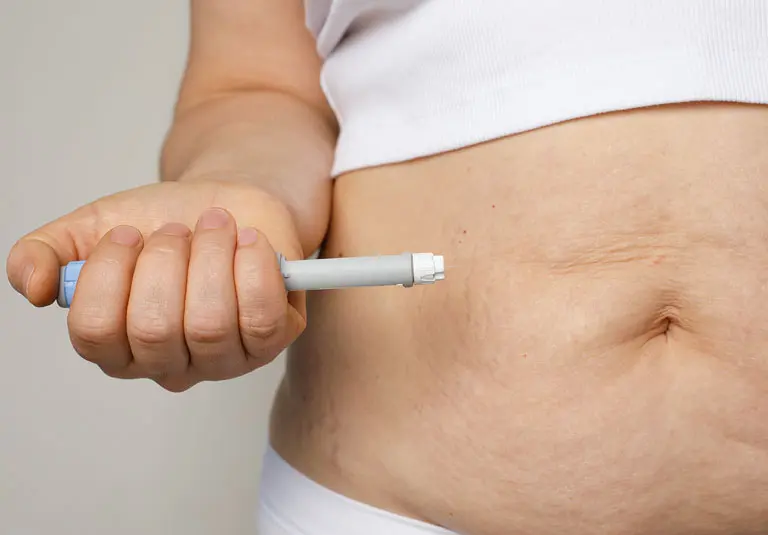
For many people in the UK, a diagnosis of prediabetes in primary care often feels confusing and overwhelming. Patients are frequently told they have “raised blood sugars” or a “borderline HbA1c,” but many leave their GP appointments with little understanding of what this actually means, what their true risk of developing type 2 diabetes is, or what they can do about it. Unlike a diagnosis of diabetes, which triggers a cascade of education and structured support, being told you have prediabetes can feel like being handed a warning without a clear action plan.
In this article, we’ll break down what prediabetes actually is, explain the key concept of insulin resistance, and look at emerging evidence showing that new medications like tirzepatide could dramatically change the outlook for those at risk.
What Is Prediabetes?
Prediabetes is a condition where blood glucose levels are higher than normal, but not yet high enough to be classified as type 2 diabetes. In the UK, it is typically diagnosed based on:
- HbA1c levels between 42–47 mmol/mol (6.0–6.4%)
- Or fasting blood glucose levels between 5.5–6.9 mmol/L
Prediabetes signals that the body is starting to struggle with managing blood sugar levels effectively. It’s a major red flag: studies show that without intervention, up to 50% of people with prediabetes will develop type 2 diabetes within five years.
However, because the condition has no obvious symptoms, and because there’s often little immediate consequence, it’s easy for patients (and sometimes clinicians) to underestimate its seriousness.
What Is Insulin Resistance?
At the heart of prediabetes lies insulin resistance.
Insulin is the hormone that helps your cells absorb glucose from the bloodstream to use as energy. In a healthy person, when you eat, your pancreas releases insulin to move sugar into your cells.
With insulin resistance, your body’s cells don’t respond properly to insulin. The pancreas compensates by producing even more insulin, but over time, this overproduction can’t keep up. As a result, blood glucose levels start to rise.
Insulin resistance develops silently over years, fuelled by factors like:
- Excess weight (particularly around the abdomen)
- Physical inactivity
- Genetics
- Poor diet
- Hormonal changes (such as in polycystic ovary syndrome)
Importantly, insulin resistance is reversible. Weight loss, increased activity, and dietary changes can significantly improve insulin sensitivity.
Why Tirzepatide Is Generating Excitement
Until recently, the focus for managing prediabetes was almost entirely on lifestyle changes: diet, exercise, and weight loss. While these remain the cornerstone of treatment, a growing body of evidence suggests that medications can offer significant help — particularly for people struggling to make enough lifestyle changes to reverse the process alone.
One of the most exciting developments is the weight loss drug, tirzepatide (mounjaro). Tirzepatide is a dual GIP and GLP-1 receptor agonist. This means it mimics the action of two gut hormones that help regulate insulin, glucose metabolism, and appetite.
A recent study has shown that tirzepatide can:
- Lead to dramatic weight loss (15–20% of body weight in many patients)
- Improve insulin sensitivity
- Normalize blood glucose levels
In trials, tirzepatide was so effective that many people with prediabetes returned to normal glucose levels altogether. In fact, a 2023 study published in The Lancet found that among participants with prediabetes who were treated with tirzepatide, a significant proportion no longer met the criteria for prediabetes after just one year.
This is hugely promising because it suggests that, in the future, medications like tirzepatide could not just manage but potentially prevent type 2 diabetes — something we’ve never had a reliable way to do before at scale.
Is there anything else that can help?
Metformin, a drug used in diabetes, has also been shown to reduce the risk of prediabetes developing into diabetes, by nearly a third.
NICE recommend this treatment for patients diagnosed with prediabetes, but it is underused at present.
What This Means for Patients
The bottom line?
- Prediabetes is a serious early warning, not something to ignore.
- Insulin resistance is the underlying issue, and it can be tackled — the earlier, the better.
- Lifestyle change remains the foundation, but new treatments like tirzepatide offer powerful new tools to help people lower their risk.
For now, tirzepatide is licensed for use in type 2 diabetes and obesity management, and wider approval specifically for prediabetes is still under investigation. However, awareness of these developments is crucial: they show that with the right tools, prediabetes doesn’t have to turn into diabetes.
If you’ve been diagnosed with prediabetes, don’t settle for feeling confused or powerless. Book an appointment at Harpenden Medical instead.
We can not only analyse your blood sugars but understand how you are using insulin, give a true understanding of your risk of developing diabetes and most importantly help to reduce your risk of developing diabetes in the future.
